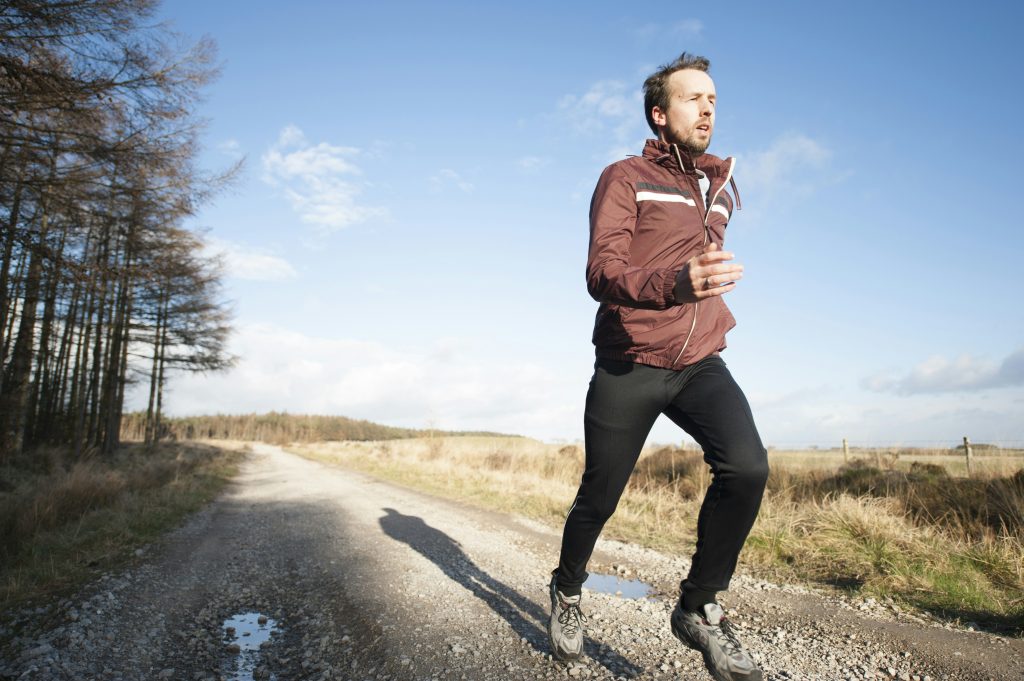After you’ve pushed yourself through an intense ab workout, it’s important to give your body the cool-down it deserves. But what exactly are the best ways to cool down after such a grueling session? If you find yourself pondering this very question, you’re not alone. Many people wonder how to properly cool down after working their abdominal muscles to the max. In this article, we’ll explore some effective techniques and strategies to help you recover and soothe those hard-worked muscles. So sit back, relax, and get ready to discover the best ways to cool down after an intense ab workout.
Stretching
After an intense ab workout, it’s important to give your muscles some tender loving care in order to promote recovery and prevent any potential injuries. One effective way to cool down and relieve tension in your body is through stretching. There are two main types of stretching that can be incorporated into your post-workout routine: dynamic stretching and static stretching.
Dynamic Stretching
Dynamic stretching involves moving parts of your body through a full range of motion in a controlled manner. This type of stretching is beneficial in preparing your muscles and joints for physical activity, as it helps to improve flexibility, range of motion, and overall muscle performance. Some dynamic stretching exercises you can try after your ab workout include leg swings, arm circles, and torso twists. These movements not only help to increase blood flow and warm up your body, but they also aid in preventing muscle tightness and reducing the risk of injury.
Static Stretching
Static stretching, on the other hand, involves holding a stretch for a certain period of time without movement. This type of stretching is particularly effective in improving flexibility and muscle length. While dynamic stretching is recommended prior to a workout, static stretching is more suitable for the cool-down phase. It helps to relax your muscles, reduce muscle soreness, and improve your overall flexibility. Some static stretching exercises you can incorporate into your post-ab workout routine include hamstring stretches, quadriceps stretches, and calf stretches. Remember to hold each stretch for at least 15-30 seconds and breathe deeply while doing so.
Foam Rolling
Foam rolling, also known as self-myofascial release, is a popular technique used by athletes and fitness enthusiasts to relieve muscle tension and promote muscle recovery. This technique involves using a foam roller to apply pressure to specific muscles and trigger points in order to release tightness and improve blood flow.
Why Foam Rolling is Beneficial
Foam rolling has numerous benefits for your body, especially after an intense ab workout. Firstly, it helps to break up adhesions and knots in your muscles, which can lead to improved range of motion and flexibility. This means that you’ll be able to move more efficiently during your workouts and reduce the risk of injury. Foam rolling also helps to increase blood flow to your muscles, which in turn enhances nutrient delivery and waste removal, aiding in muscle recovery and repair.
Foam Rolling Techniques
There are several foam rolling techniques you can use to target different muscle groups in your body. For your ab muscles, you can lie on the foam roller with it positioned perpendicular to your body, just below your ribcage. Roll slowly back and forth, focusing on any areas that feel particularly tight or sore. You can also try rolling along the sides of your torso to target your obliques.
Remember to breathe deeply and relax as you roll, allowing the pressure to work its magic. It’s normal to feel some discomfort or even mild pain when foam rolling, but it should never be unbearable. If you experience sharp pain, adjust your position or seek guidance from a fitness professional.

Deep Breathing
Deep breathing exercises are a simple yet powerful way to calm your body and mind after an intense ab workout. Proper breathing techniques can help to regulate your heart rate, lower your blood pressure, and activate your body’s relaxation response. This can significantly aid in reducing post-workout muscle tension and promoting a sense of calm and well-being.
Benefits of Deep Breathing
Deep breathing offers a plethora of benefits for your overall health and well-being. When it comes to post-workout recovery, deep breathing helps to increase oxygen flow to your muscles, facilitating the removal of metabolic waste products that accumulate during exercise. It also helps to induce a state of relaxation, which can aid in reducing stress hormones and promoting optimal recovery.
Deep Breathing Techniques
There are several deep breathing techniques you can try after your intense ab workout. One popular method is diaphragmatic breathing, also known as belly breathing. To do this, sit or lie down in a comfortable position and place one hand on your belly and the other on your chest. Take a slow, deep breath in through your nose, allowing your belly to rise as you inhale. Exhale slowly through your mouth, feeling your belly fall. Focus on breathing deeply into your diaphragm rather than shallow chest breaths.
Another technique you can try is box breathing, which involves inhaling for a count of four, holding the breath for a count of four, exhaling for a count of four, and then holding the breath again for a count of four. Repeat this cycle several times, focusing on the rhythm of your breath and allowing yourself to fully relax.
Hydration
Proper hydration is essential for overall health and well-being, especially after an intense ab workout. When you exercise, your body loses water through sweat, and it’s important to replenish these fluids to maintain optimal bodily functions.
Importance of Hydration
Hydration plays a crucial role in supporting muscle recovery and preventing dehydration-related complications. Adequate fluid intake helps to transport nutrients to your muscles, carrying away waste products and promoting the repair and growth of muscle tissue. It also aids in maintaining electrolyte balance, which is essential for proper muscle and nerve function. Proper hydration can also help to alleviate post-workout muscle soreness and fatigue.
Hydration Guidelines
To ensure proper hydration after your ab workout, it is recommended to drink water or a sports drink within 30 minutes of completing your workout. Aim to drink at least 16-20 ounces of fluid for every pound of body weight lost during exercise. Throughout the day, continue to drink water regularly to maintain hydration levels.
It’s important to listen to your body and drink fluids as needed. Thirst is not always the best indicator of hydration status, so it’s a good idea to make it a habit to drink water even before you feel thirsty. Additionally, if you’re exercising in hot or humid conditions or for an extended period of time, you may need to increase your fluid intake to compensate for increased sweat loss.

Cooling Exercises
Cooling exercises are an excellent way to gradually bring your heart rate, body temperature, and breathing back to a resting state after an intense ab workout. They help to promote blood flow and circulation throughout your body, aiding in recovery and preventing post-workout muscle stiffness.
Leg Swings
Leg swings are a simple yet effective cooling exercise that primarily target your hip flexors and hamstrings. Start by standing tall and holding onto a stable surface for balance if needed. Swing one leg forward and backward in a controlled manner, keeping your movements smooth and fluid. Repeat this motion for 10-15 swings on each leg. Leg swings help to lengthen tight muscles and improve hip mobility.
Arm Circles
Arm circles are an effective cooling exercise that target the muscles in your shoulders and upper back. Stand with your feet shoulder-width apart and extend your arms straight out to the sides. Begin making circles with your arms, gradually increasing the size of the circles. After 10-15 seconds, switch directions. Arm circles help to increase blood flow to your upper body and improve shoulder flexibility.
Torso Twists
Torso twists are a great cooling exercise that help to stretch and mobilize your core muscles and spine. Stand with your feet hip-width apart and place your hands on your hips. Slowly twist your upper body to one side while keeping your hips facing forward. Hold the twist for a few seconds, then return to the starting position and repeat on the other side. Perform 10-12 twists in each direction. Torso twists improve spinal mobility and relieve tension in your core muscles.
Cold Compresses
Cold compresses, also known as ice packs, can be highly beneficial for reducing inflammation, swelling, and muscle soreness after an intense ab workout. Applying cold to the affected areas helps to constrict blood vessels, decrease metabolic activity, and numb the nerves, providing immediate relief and promoting healing.
Benefits of Cold Compresses
Cold compresses offer a wide range of benefits for your muscles and joints, making them an effective tool for post-workout recovery. They help to reduce inflammation and swelling by constricting blood vessels, which in turn aids in alleviating pain and soreness. Cold compresses also help to decrease muscle spasms and metabolic activity, allowing your muscles to relax and recover more efficiently.
Application of Cold Compresses
To apply a cold compress after your intense ab workout, simply wrap an ice pack or a bag of frozen vegetables in a thin towel and place it on the affected area for 15-20 minutes. Be sure to avoid direct contact between the ice and your skin to prevent frostbite. Take short breaks between applications to allow your skin to warm up. Remember not to use cold compresses for an extended period of time, as this can lead to skin damage.

Active Recovery
Active recovery involves engaging in low-intensity exercise after a challenging workout, such as walking or jogging. It provides a gentle yet effective way to promote muscle recovery, improve blood circulation, and flush out metabolic waste products.
Low-Intensity Exercise
Engaging in low-intensity exercise after an intense ab workout helps to keep your blood flowing and promotes active recovery. Walking or jogging are great options for low-intensity activities that can be easily incorporated into your post-workout routine. Take a leisurely stroll or go for a light jog for about 15-20 minutes, focusing on keeping your heart rate and breathing at a comfortable level. This gentle movement helps to flush out lactic acid, reduce muscle soreness, and promote overall recovery.
Proper Nutrition
Proper nutrition is essential for replenishing energy stores, supporting muscle repair, and optimizing recovery after an intense ab workout. Fueling your body with the right nutrients helps to promote muscle growth, alleviate muscle soreness, and enhance overall performance.
Post-Workout Meal
Consuming a well-balanced meal that contains both carbohydrates and protein within 30 minutes to an hour after your ab workout is crucial for muscle recovery and growth. Carbohydrates provide the energy your body needs to replenish glycogen stores, while protein aids in repairing and building new muscle tissue.
Aim to include a source of lean protein, such as chicken, fish, tofu, or Greek yogurt, alongside complex carbohydrates like whole grains, fruits, and vegetables in your post-workout meal. Including a moderate amount of healthy fats, such as avocado or nuts, can also be beneficial for providing sustained energy and promoting satiety.
Importance of Protein
Protein plays a critical role in muscle repair and growth, making it an essential nutrient for post-workout recovery. Consuming an adequate amount of protein after your ab workout helps to stimulate muscle protein synthesis, which is the process that allows your muscles to repair and rebuild themselves.
Good sources of protein include lean meats, poultry, fish, eggs, dairy products, legumes, and plant-based protein powders. Aim to consume about 20-30 grams of protein within the first hour after your workout to optimize muscle recovery and growth.

Contrast Therapy
Contrast therapy involves alternating between hot and cold temperatures to promote muscle recovery and improve circulation. This technique helps to reduce inflammation, decrease muscle soreness, and speed up the healing process.
Hot and Cold Showers
One way to incorporate contrast therapy into your post-workout routine is by taking hot and cold showers. Start by standing under warm water for 2-3 minutes to increase blood flow and relax your muscles. Then, switch to cold water and stand under it for 1-2 minutes to constrict blood vessels and reduce inflammation. Repeat this cycle 2-3 times, always ending with cold water.
Benefits and Techniques
Contrast therapy offers numerous benefits for post-workout recovery. It helps to reduce muscle soreness and stiffness, enhance circulation, and promote muscle relaxation. It also aids in flushing out metabolic waste products and providing pain relief.
To achieve the best results with contrast therapy, it’s important to ensure a significant difference in temperature between the hot and cold water. Maintain a temperature difference that is comfortably tolerable for you, gradually increasing the contrast as your body becomes accustomed to the therapy.
Rest and Sleep
Rest and sleep are often overlooked elements of the recovery process, but they are absolutely crucial for allowing your body to repair and rebuild after an intense ab workout. During sleep, your body releases growth hormones that help to repair damaged tissues, boost muscle recovery, and strengthen your immune system.
The Importance of Rest
Rest is essential for allowing your muscles, joints, and nervous system to recover after intense physical activity. It helps to prevent overuse injuries, reduce muscle fatigue, and restore energy levels. Without proper rest, your body can become more prone to injury, and your performance may plateau.
In addition to physical rest, mental rest is also important for recovery. Giving yourself some downtime to relax, unwind, and engage in activities that bring you joy and peace of mind can further aid in the recovery process.
Sleeping for Recovery
Quality sleep plays a vital role in post-workout recovery. Aim for 7-9 hours of uninterrupted sleep each night to ensure optimal muscle repair and growth. During sleep, your body produces growth hormone, which stimulates tissue growth and repair. It’s also a time when your body enters into a deep state of relaxation and regeneration.
To improve the quality of your sleep, establish a consistent sleep schedule, create a sleep-friendly environment, and practice relaxation techniques before bed. Avoiding caffeine and electronic devices, keeping your bedroom cool and dark, and practicing a relaxing bedtime routine can all contribute to a better night’s sleep and enhance your body’s recovery process.
In conclusion, cooling down after an intense ab workout is vital for your overall health and well-being. By incorporating stretching, foam rolling, deep breathing, hydration, cooling exercises, cold compresses, active recovery, proper nutrition, contrast therapy, and rest into your post-workout routine, you can optimize your recovery, prevent injuries, and continue progressing towards your fitness goals. Remember to listen to your body’s needs, be consistent with your cooldown routine, and prioritize recovery to ensure long-term success in your fitness journey.





